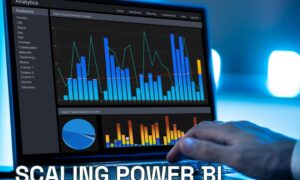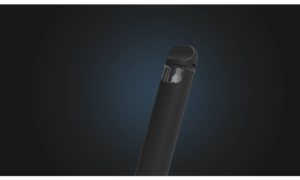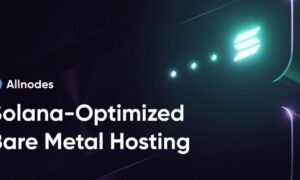Performance management software aims to improve the company’s performance by boosting its employees’ productivity. It’s about ensuring that employees and teams are engaged and aligned with business goals. The software replaces an annual mechanism, the performance review, with a real-time one with performance monitoring, goal setting, and feedback
The added value of these systems compared to annual reviews is that they allow the company to adjust the expectations and individual objectives of the employee when the situation changes. According to critics, the annual studies focus too much on the past and not enough on future needs.
Performance management software falls under the HR department. They are part of talent management systems. The HR department trains managers and employees in their use.
Goals of performance management software
Next-generation HR software, these performance management software help balance today’s goals of ongoing performance monitoring while providing employees with support and feedback. This type of software tracks individual team contributions as well as the team’s ability to meet business objectives: performance is thus linked to the balance sheet. PSP is a leading provider of network performance management tools.
Remobilizing employees is another of the objectives of this software. Each person can view their individual performance and progress against goals, including tracking efforts on specific projects. Managers measure individual performance against goals, and employees has a better sense of where they stand.
Performance Management Software Features
For managers, the use of performance management software puts an end to the tedious process of the year-end review. On the other hand, these tools must be used on a daily basis to obtain conclusive results: they promote regular exchanges between employees and managers.
Another feature of performance systems, the 360° review includes not only feedback from the line manager but also from colleagues and subordinates
These systems display dashboards that turn reviews into a fast, collaborative exercise. They measure individual performance as well as team or project performance like PSP. They may also include employee ranking functionality.
An effective performance management program must interact with other tools, especially people data analysis tools. For example, data can be analyzed against outputs from financial management and sales performance management systems
Performance management software: 5 reasons to equip yourself
Whether you are a young, growing startup or an already well-established company, performance management via an annual or semi-annual evaluation is strategic! If it is not optimal, it will necessarily have a negative impact on your employees and your entire company. This is why companies are changing their practices by equipping themselves with dedicated performance management software. They thus simplify the management of their assessment campaigns, which previously represented a real headache for the HR team. And can adapt their evaluation rituals to the new needs and expectations of their employees.
Human resources teams are often much more mobilized. It is, therefore not easy to prioritize the implementation of a performance management solution. However, here are the five reasons why it is essential to equip yourself quickly:
1. You will save time and save time
Performance interviews are essential. But their sometimes very time-consuming and cumbersome preparation can considerably reduce the benefits. An effective performance evaluation supported by ergonomic tools greatly streamlines the process, both for HR managers and employees.
For HR managers, the digitization of interview campaigns puts an end to loose sheets and multiple round trips with managers and employees to prepare, comment on and sign the document. Not to mention that it eliminates the risk of losing papers and the need to chase after latecomers. Then, the use of dedicated performance management software makes it possible to aggregate the interview data and make use of it. For example, the extraction of training requests, the general level of employee engagement, or the evaluation of skills…
For employees, the use of a tool simplifies and makes the performance evaluation process more fun. They invest more and complete their preparation more quickly.
2. Give timely and real-time feedback
Feedback has become an essential part of work and must be included in performance management. Employees increasingly need regular feedback on their performance. And especially on the means to put in place to improve them! Whether positive (instilling self-confidence and valuing an employee’s contribution) or negative (identifying areas for improvement and ways to achieve them).
But effective and constructive feedback must be immediate and create exchanges. Good performance management software must allow real-time feedback. “hot” feedback will be fairer and less biased, and therefore better perceived. And you will engage in a real conversation with your collaborator to understand his feelings and support the definition of areas for improvement.
3. Improve monitoring and management of individual performance
A way of managing performance poorly accepted will result in the disengagement of your top performers. It will also prevent underperformers from progressing. It is, therefore not surprising to know that an inadequate performance evaluation system is regularly cited as the reason why employees leave their companies. Conversely, complete performance management software can address this problem in the most effective way possible. Indeed, you give meaning to everyone’s work, align your employees’ objectives with those of the company, and set up a continuous performance monitoring process. By following the objectives more regularly, the manager and his collaborator can better identify the blocking points to be removed and gain in reactivity to set up an action plan.
4. Centralize your data
Performance management software has the considerable advantage of providing you with all the essential details about your employee’s performance in a single platform: centralization, monitoring, and management of individual objectives, appraisal interviews, and employee feedback. Little by little, performance history is built up for all employees. This represents an information base of great value, supports exchanges between manager and employee, and which provides HR with the tools to set up a career development plan.
5. Holistic feedback
You can broaden the scope of the assessment and include stakeholders other than the direct manager, such as colleagues who work with the employee on a daily basis. Thanks to performance management software, you can notably set up 360° assessments. These are more holistic than traditional assessments and offer a fairer and more complete view of employee performance.



































